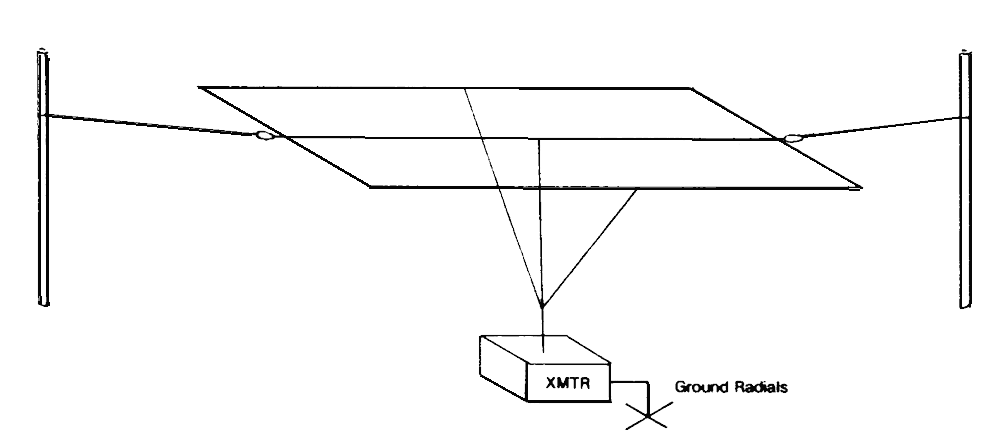Introduction To The 1750 Meter Experimenters Band
The 160-190 kHz slice of spectrum has been available to experimenters since the early 1950's. The 1750 meter unlicensed experimenters band requires conforming to FCC part 15 where a 50 ft. antenna including the feed line and a one watt input to the transmitter power amplifier be used.
Distances of 30 miles using cw is usually the rule and 100 miles or more are common. The typical low frequency system has a remote one watt PA located at the antenna base with the driver located at the point of operation. For receiving, an LF receiver or HF receiver with an LF converter connected to a long wire antenna with or without a tuner is typical. Some systems with limited antenna space use an active antenna. A good ground is important and long radials will give the best results.

The nominal radiation resistance for a 1750 meter antenna conforming to FCC part 15 is 20-30 milli-ohms, thus giving a very low effective radiated power output. Ground resistance is the major factor for radiated efficiency. Keeping the antenna loading coil losses low, ground resistance low and antenna top hat capacitance as high as possible for increased antenna current is the general rule. The cw mode is recommended for transmitting, and a narrow band receiver is required if any distance is to be achieved.
A mufti-down lead scheme antenna can also add efficiency to the ERP of a 1750 meter transmitted carrier, by increasing the antennas' radiation resistance.

Transmission paths over water, especially saltwater will give the best results with minimum attenuation. Several hundred mile groundwave transmissions are possible using only low power. In some cases, rare atmospheric skip conditions may occur that carry a low power cw transmission for several thousand miles.
Useful link: Longwave Club of America